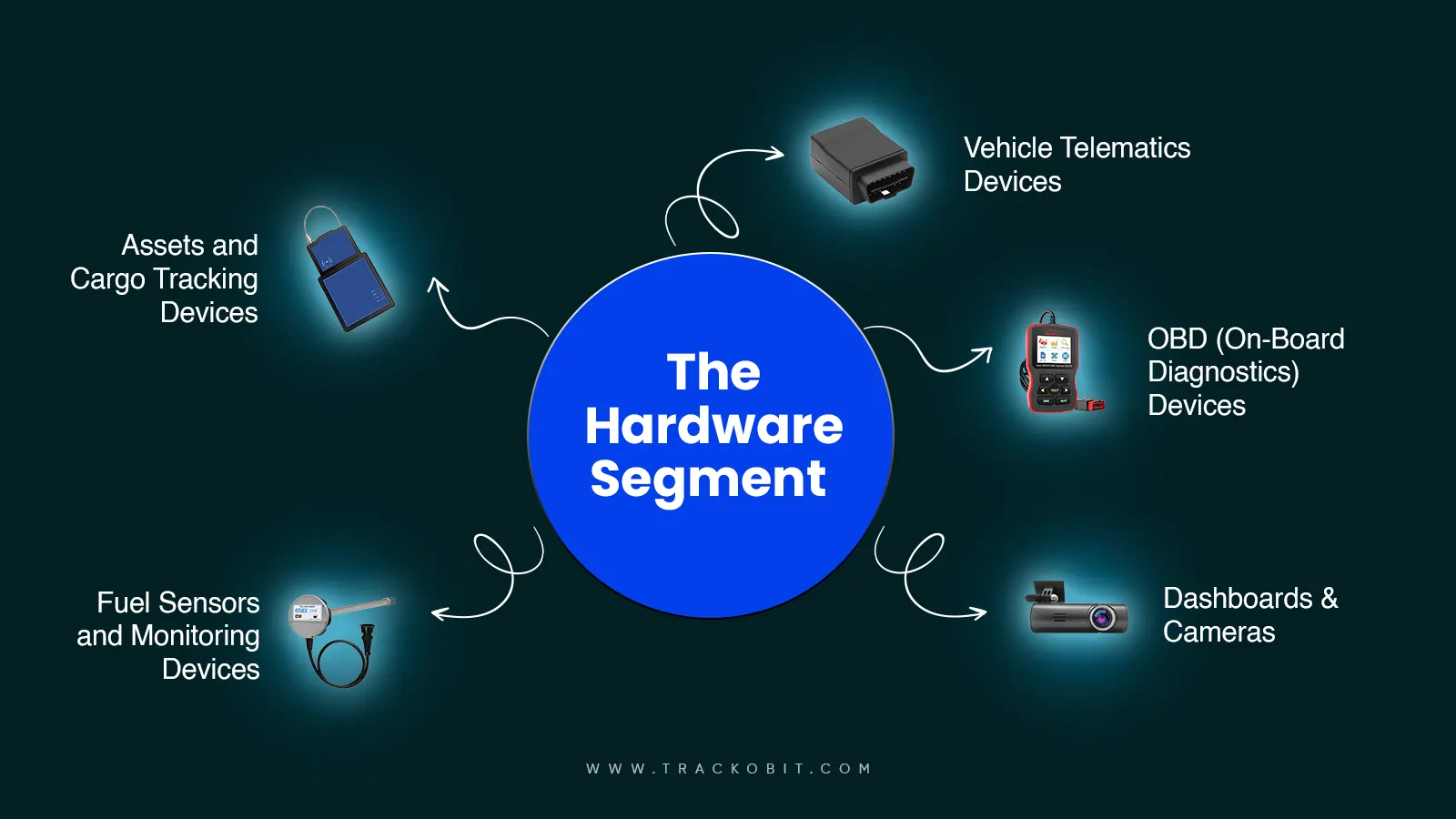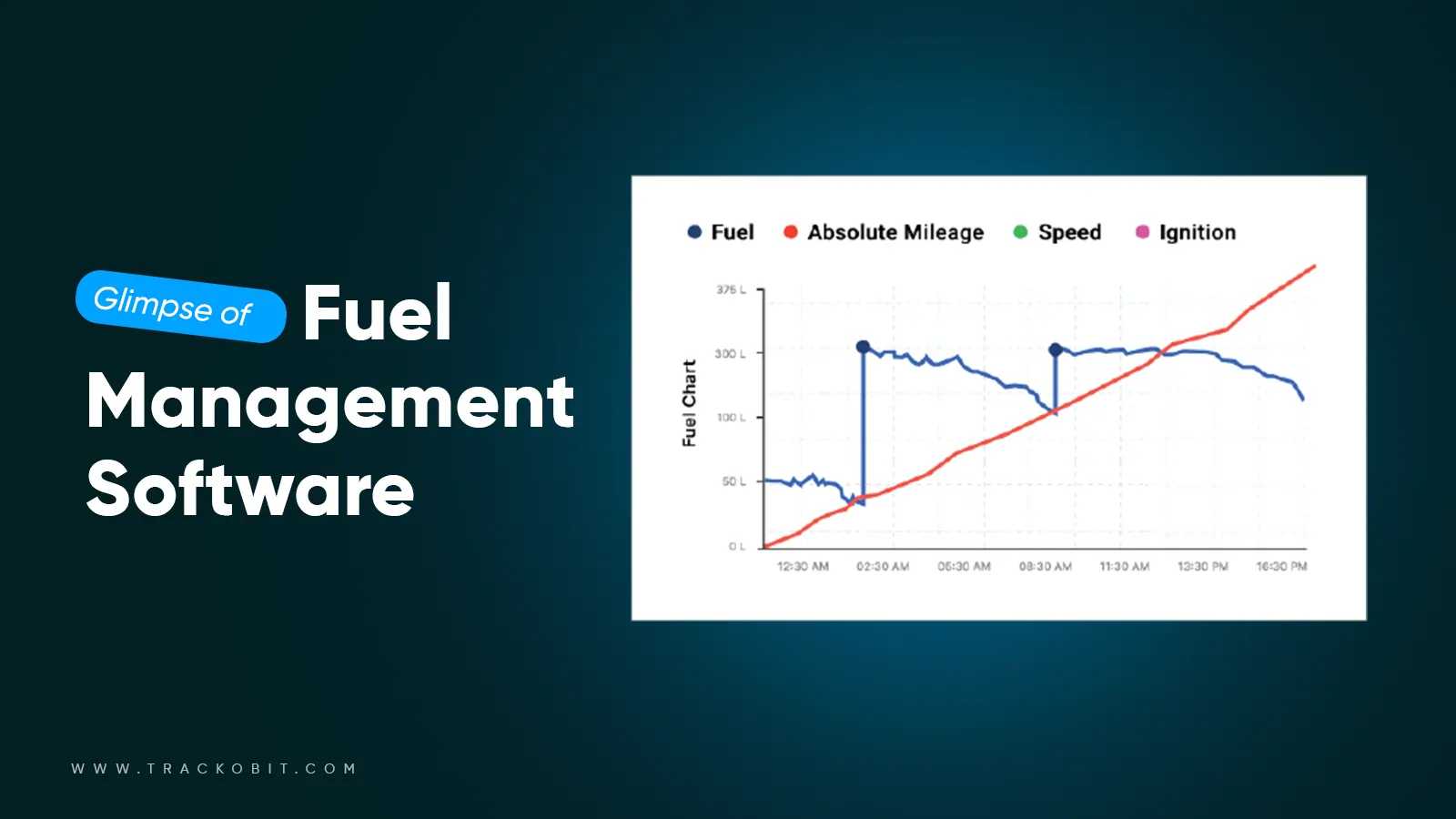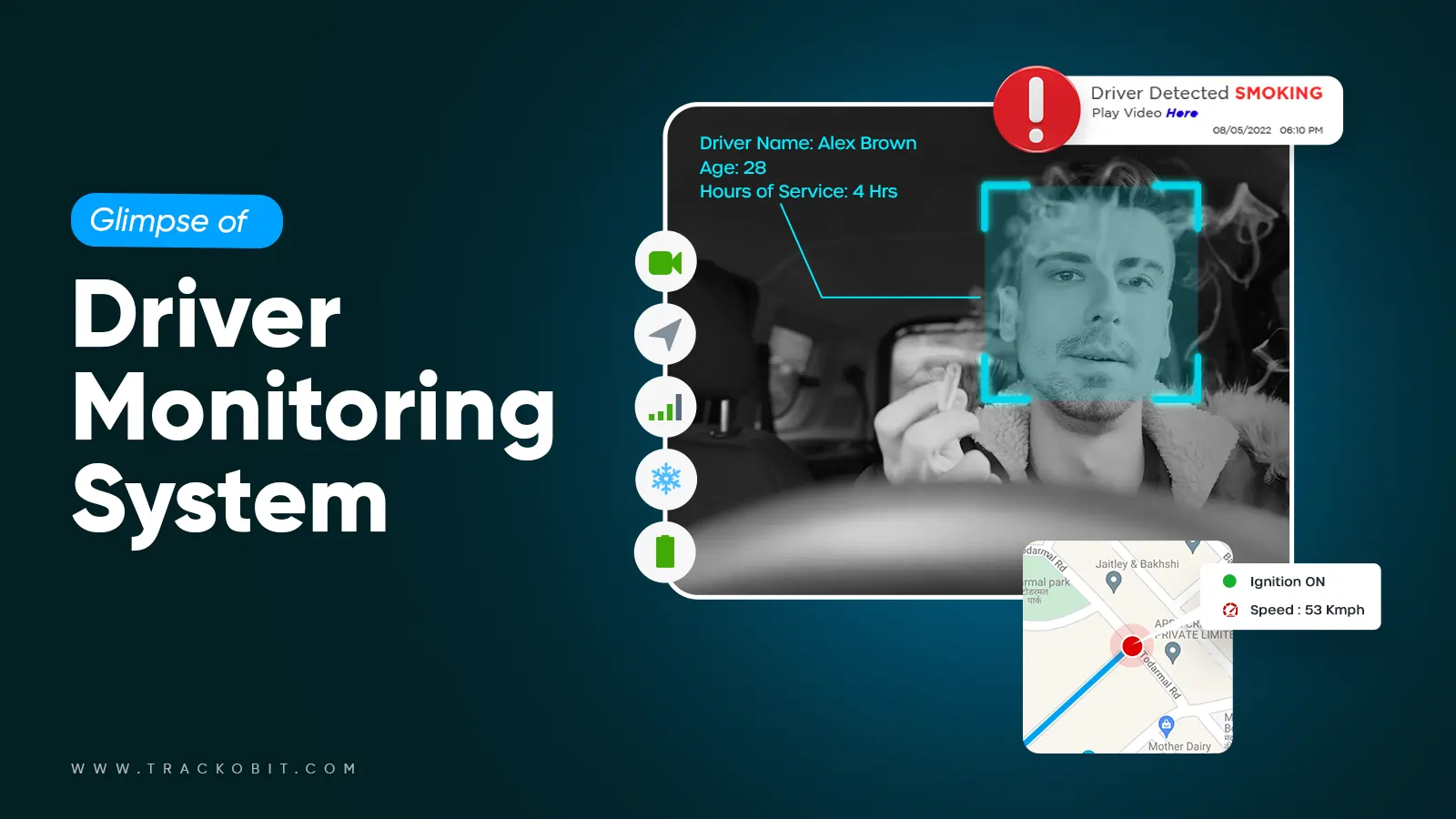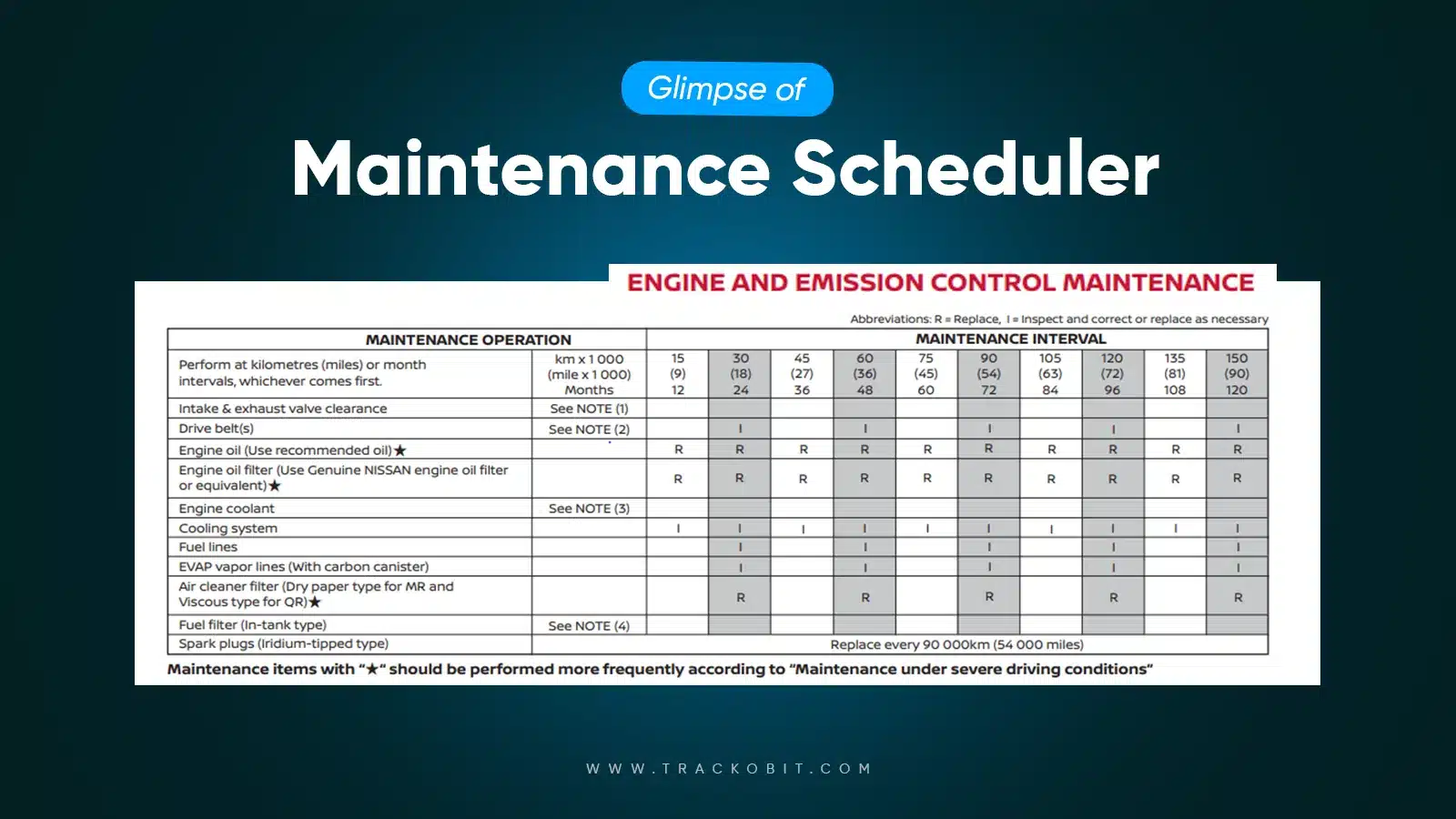-
TrackoBit
Manage commercial vehicles with the new-age Fleet Management Software
TrackoBit -
TrackoField
Streamline your scattered workforce with Field Force Management Software
TrackoField -
Features Resources
-
Blog
Carefully curated articles to update you on industrial trends. -
White Paper
Insightful papers and analysis on essential subject matters. -
Glossary
Explore an alphabetical list of relevant industry terms. -
What’s New
Get TrackoBit & TrackoField monthly updates here. -
Case Study
Explore the cases we solved with our diverse solutions. -
Comparisons
Compare platforms, features, and pricing to find your best fit.
-
About Us
Get to know TrackoBit: our team, ethos, values, and vision. -
Careers
Join the most dynamic cult of coders, creatives and changemakers. -
Tech Support
Learn about our technical support team and services in detail. -
Events
Check out the exhibitions where we left our marks and conquered. -
Contact Us
Connect with us and let us know how we can be of service.
Components of Fleet Management – The Hardware & Software Segment
- Author:Anvesha Pandey
- Read Time:8 min
- Published:
- Last Update: May 15, 2025
Table of Contents
Toggle
Keen to know what exactly fleet management is composed of and what its basic components are? This piece unfolds it all.
Table of Contents
Toggle
The prime goal of most fleet-centric businesses is to optimize operations. However, the complexities of managing a fleet can be overwhelming, with challenges ranging from vehicle maintenance and fuel consumption to driver safety and regulatory compliance.
This is where an ideal fleet management system comes to the rescue.
This piece of writing revolves around the components of fleet management systems and how these components help eliminate these problems.
Why is Fleet Management Necessary?
Well, we all know the fact that managing without the right strategies and solutions can be one of the most challenging tasks. Fleet management is necessary to ensure fleet efficiency, cost control, and safety. At its core, the systems enable the monitoring, coordinating, and optimizing of fleet operations.
Effective fleet management solutions help you track the consumption of fuel, vehicle maintenance schedules, and driver performance along with ensuring that the vehicles are operating at peak efficiency.
Now that you have partial insights into why fleet management is necessary, let’s just quickly unfold what challenges you could face without fleet management software.
- Difficulty in tracking vehicles and assets in real-time resulting in delays, miscommunication, and inefficiencies.
- The inability to optimize or plan efficient routes leads to longer travel time, increased fuel costs, and missed deliveries sometimes.
- An increase in accidents resulting in damage to a person or asset.
- Low driver retention or risky driving behavior.
- Increase in fleet operation expenses (including an increase in fuel consumption, frequent vehicle maintenance, and more).
- Poor resource utilization, increased downtime, and lower return on capital invested.
And the list goes on. That’s why investing in fleet management software is essential. But before you choose a system, let’s make you understand its core components.
| FACT TIME:- According to recent industry reports, businesses that implement advanced fleet management systems can reduce operational costs by up to 15%. |
The Components of Fleet Management Systems
Coming straight to the point, the crucial components of fleet management systems can be broadly divided into two categories i.e. the hardware segment and the software segment. Let’s just quickly unfold the two-
To start with the hardware components –

The Hardware Segment of Fleet Management
HARDWARE:
1. Vehicle Telematics Devices
Telematics devices are really integral to modern-day fleet management. The devices are majorly designed to gather and transmit vehicular data. These systems are equipped with different kinds of sensors that are responsible for the collection and transmission of data around aspects like speed, location, and more.
This collected data is relayed to central servers (fleet management platforms or cloud platforms) via the GPS and cellular networks. Moreover, this data helps fleet managers to access real-time insights into positioning and performance.
2. OBD (On-Board Diagnostics) Devices
OBD or On-Board Diagnostics devices plug into a vehicle’s OBD port. These devices are used to monitor the vehicle’s diagnostics information. These devices detect engine issues and track performance data and also generate fault codes whenever a fault is detected.
OBD devices generally provide early warnings for issues such as engine misfires, emission problems, and sensor failures. This further allows for preventive maintenance to be scheduled before serious breakdowns occur.
3. Dashboards & Cameras
Dashboards and in-cab cameras are some of the most crucial components of fleet management as they contribute to better driver behavior monitoring.
The dashboards of a vehicle help in displaying important information such as speed, fuel levels, and engine health whereas the cameras record the driver’s actions and the road conditions. These cameras can detect risky driving behaviors like harsh braking, speeding, and distracted driving.
Video telematics solutions have leveraged most of the in-cab cameras to enhance fleet management. The system provides you with real-time footage and valuable data about driver behavior and vehicle performance.
In simple terms, this technology integrates video with telematics data to create a comprehensive view of what occurs on the road, enabling you to make informed decisions.
Amazing right? Wondering which Video Telematics Solution to invest in?
TrackoBit can be the perfect fit- manage careless driving, and better-driving assistance paired with screenshots and clips.
4. Fuel Sensors and Monitoring Devices
Fuel sensors are specialized hardware devices installed in vehicles to accurately monitor fuel levels and consumption. These devices integrate with fuel management software to provide you with real-time level monitoring, detection of fuel theft and leaks, and detailed fuel consumption reports.
Altogether, fuel sensors facilitate automated fuel expense tracking and overall cost management. This further helps fleets to optimize fuel efficiency and control operating costs more effectively.
5. Assets and Cargo Tracking Devices
Theft is only one of the prime concerns of fleet-centric business. You can have an eye on time theft with a video telematics system, or fuel theft with a fuel monitoring system but what about asset theft? Here assets and cargo tracking devices come in use.
These devices are equipped with GPS and RFID technology, providing real-time updates on the location and condition of cargo. Asset tracking devices help prevent loss, theft, and damage to cargo. Additionally, they streamline logistics by ensuring that managers always know where their assets are and when they will arrive.
Dive More into asset tracking and cost: How Much Does Asset Tracking Really Cost in 2025?
6. Reefer Temperature Monitoring Sensors
Reefer temperature monitoring sensors are critical devices used in refrigerated trucks to ensure perishable goods stay within a safe temperature range.
These sensors continuously monitor the temperature inside the refrigerated compartment and transmit real-time data to fleet management software. This allows fleet managers to track and maintain the ideal conditions for sensitive cargo, such as food, pharmaceuticals, or chemicals.
This technology is vital for preserving product quality during transport and optimizing cold chain logistics.
Now it’s time to get into the software segment-
SOFTWARE:
1. GPS Tracking Software & Telematics Software
GPS tracking software is an important element when it comes to fleet management. The software helps in accurate live fleet visibility. It uses satellite navigation systems to provide locational and speed info. Additionally, the software lets you set geofences and provide you with route deviation alerts.
GPS tracking software powered by telematics data is just not only for basic locational tracking. They also help you have insights into various parameters like your driver’s beheviour, engine diagnostics of your vehicle, and more.
The hardware segments include GPS devices and telematics units that gather raw data from the vehicles. Whereas the software offers insights and actionable recommendations to you.
2. Fuel Management Software & Cost Control
Fuel monitoring/management systems monitor the patterns of fuel consumption. This analysis helps you identify the inefficiencies and implement proper strategies to reduce fuel costs. The software also generates reports on fuel usage.
It generates reports on fuel usage tied to specific vehicles or drivers, enabling targeted cost-control measures. It can integrate with telematics systems to provide a complete view of factors contributing to fuel efficiency, such as driving habits and route planning.
The hardware used in fuel management typically includes fuel sensors and monitoring devices that relay data to the software. While hardware collects the information, the software processes it to provide meaningful insights for reducing fuel-related expenditures.

Glimps of Fuel Management Software
3. Driver Management Software
Aren’t drivers one of your most valuable assets, but then managing them can be a task sometimes. This is where driver behavior monitoring software comes into use.
The software primarily focuses on assessing and improving driver behavior by monitoring various metrics like speed, harsh braking, and idling time. This analysis not only highlights risky driving partners but also helps you provide better driver training to enhance safety and compliance.

A Glimpse Driver Monitoring System
4. Vehicle Maintenance & Downtime Reduction
Vehicle maintenance systems automate maintenance scheduling based on metrics of telemetry data. It identifies impending maintenance needs before they become critical, promoting a proactive approach to vehicle upkeep.
The hardware segment includes sensors and diagnostic tools that collect data about vehicle health.
While hardware captures the operational status of vehicles, the software analyzes this data to inform maintenance schedules and alert managers to potential issues.

A Glimpse into Maintenance Scheduler
The Hardware and the Software- Everything in Between
Hardware and software are two halves of a whole as they both work together.
In the case of telematics, you add a tracking device (the hardware segment). This helps you record vehicular information like location, speed, fuel efficiency, idling, and more. Now add video telematics i.e. AI-enabled cameras and you get a 360-degree view of driver behavior and incidents such as collisions.
The hardware segment of fleet management systems helps you capture raw data, whereas the software enables you to churn all of these insights into actionable data further helping in making more informed decisions.
All-in-all the hardware in fleet management gathers data like the vehicle’s eyes and ears, while the software processes it like a brain to guide decisions.
Here is an example for better understanding-
To effectively monitor Raju’s location (the driver), Manoj (the fleet manager) relies on fleet management software. The system not only provides real-time GPS tracking but also offers advanced insights into vehicle health. The software retrieves data from GPS hardware installed in the truck, allowing Manoj to see exactly where Raju is driving at any given moment.
Beyond location tracking, Manoj leverages the software’s diagnostic tools. This helps him analyze data from vehicle sensors to monitor engine performance, fuel efficiency, and upcoming maintenance schedules. With automated alerts and detailed reports, Manoj can make informed decisions to prevent breakdowns, reduce fuel costs, and ensure the fleet runs smoothly.
That’s how both hardware and software components work collaboratively.
Final Words
Now that we are almost towards the end of wrapping this piece, we hope you might have understood the building blocks of fleet management.
The combination of hardware and software serves as the backbone of efficiency and safety within fleet operations. The system together helps in providing real-time fleet tracking and visibility.
By utilizing advanced fleet management technologies to monitor and optimize every aspect of fleet management, companies can not only enhance their operational efficiency but also improve fleet safety and fleet compliance.
What’s your next move?
To invest in advanced fleet management software!
Introducing TrackoBit’s comprehensive solutions! Experience real-time tracking, optimized routes, fuel monitoring, and driver behavior analysis—all designed to enhance efficiency and reduce costs.
Don’t let inefficiencies hold you back.
Get in touch today.
FAQs
-
Who is a Fleet Manager?
A fleet manager oversees the operation and maintenance of a company's fleet of vehicles. Their responsibilities include vehicle acquisition, route planning, fuel management, and ensuring driver safety and compliance with regulations.
-
How can fleet safety be improved?
Fleet safety can be enhanced through driver training, regular vehicle maintenance, and implementing monitoring technologies like dashcams and telematics.
-
How does fleet analytics enhance safety?
It monitors driver behavior, identifying risky habits like harsh braking or speeding, allowing managers to address and improve safety practices.
-
Can telematics help in cost management?
Yes, telematics provides real-time data on vehicle performance and driver behavior, helping fleet managers identify inefficiencies and reduce operational costs.
Anvesha is a communication specialist at TrackoBit. With a strong background in media and communications, she adds much-needed balance and brevity to TrackoBit’s... Read More
Related Blogs
-

When Tracking Needs a Clock: Rethinking Fleet Visibility
Tithi Agarwal December 24, 2025Read on to understand why fleet tracking works better when it follows working hours. Because visibility should support operations, not…
-

What Makes TrackoBit’s Video Telematics Software Truly Next-Gen?
Shemanti Ghosh December 17, 2025TrackoBit’s video telematics software blends smart video intelligence with full server control. The result? Superior fleet reliability and safety.
-

Plug, Pair, Perform TrackoBit Introduces BLE Sensor Integration
Tithi Agarwal November 26, 2025TrackoBit’s BLE Sensor Integration enables wireless, real-time monitoring with faster installs and accurate insights. It improves fleet efficiency, visibility, and…
-

How to Use Driver Behavior Reports as a Sales Hook to Close Big Fleets
Tithi Agarwal October 16, 2025TrackoBit’s driver behavior reports empower fleet providers to win big contracts by showcasing safety, efficiency, and measurable ROI.

Subscribe for weekly tips to optimize your fleet’s potential!
Your inbox awaits a welcome email. Stay tuned for the latest blog updates & expert insights.
"While you're here, dive into some more reads or grab quick bites from our social platforms!"Stay Updated on tech, telematics and mobility. Don't miss out on the latest in the industry.
We use cookies to enhance and personalize your browsing experience. By continuing to use our website, you agree to our Privacy Policy.


































